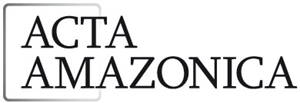ABSTRACT
The pantropical Vanilla is the most species-rich genus among Vanilloideae (Orchidaceae). With 38 species, Brazil is the center of diversity for Vanilla. Several of the Brazilian taxa are considered obscure, as species boundaries are often unclear when studies are performed exclusively on dried specimens. This is the case of Vanilla sprucei Rolfe, a rare taxon with ephemeral flowers that has been referred to Brazil based on a specimen collected in the Colombian Amazonia. We present data confirming its occurrence in Brazil, together with a taxonomic evaluation of this poorly-known species including a detailed, illustrated morphological description. An epitype for V. sprucei based on Brazilian material is designated. The geographical distribution of this taxon is presented. The phylogenetic position of V. sprucei within Vanilla and its relationships with Neotropical congeners are discussed based on a phylogenetic hypothesis. Vanilla sprucei emerges at a basal node among the non-membranaceous, Neotropical Vanilla clade. The inclusion of V. sprucei in the molecular data matrix reinforces the V. trigonocarpa group as polyphyletic. For this reason, further infrageneric rearrangements will be necessary. Preliminary evaluation of the species´ conservation status according to IUCN criteria indicate a global status of Endangered, with subpopulations in Brazil assessed as Critically endangered.
KEYWORDS:
Brazilian flora; geographic expansion; hemiepiphytes; taxonomy; white-sand vegetation.

 Unveiling the taxonomic identity of Vanilla sprucei (Orchidaceae, Vanilloideae): its phylogenetic position and a new record for Brazil
Unveiling the taxonomic identity of Vanilla sprucei (Orchidaceae, Vanilloideae): its phylogenetic position and a new record for Brazil Thumbnail
Thumbnail
 Thumbnail
Thumbnail
 Thumbnail
Thumbnail
 Thumbnail
Thumbnail
 Thumbnail
Thumbnail
 Thumbnail
Thumbnail





